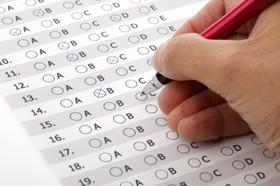As parents, we play a crucial role in our children's educational journey, especially during their middle and high school years. To support their academic success, we must understand the tools educators use to assess and guide their students' progress. This article delves into the world of rubrics and how they can empower parents in grades 7-12 to be active partners in their children's education.
The Importance of Rubrics in Grades 7-12
Rubrics are not just grading tools but windows into your child's learning experience. We'll explore why rubrics are essential for assessing academic and soft skills development, helping you gain insights into your child's progress in various subjects.
What is a rubric?
A rubric is a structured scoring guide or set of criteria used to evaluate or assess performance, work, or a particular task. It provides a clear and systematic way to measure the quality or level of achievement in a given context, such as in education, grading assignments projects, or assessing various skills.
The use of rubrics dates back to ancient times, with the term "rubric" originating from the Latin word "ruber," which means red. In ancient Rome and medieval Europe, teachers and religious leaders often used red ink or red lines to highlight important text or instructions within documents or manuscripts. Over time, this practice evolved into using red ink or markings to indicate specific grading criteria and guidelines for assessments.
However, as we understand them today, the modern concept of rubrics developed more significantly in the 20th century. The American philosopher and educator John Dewey is often associated with the early development of rubrics in the context of progressive education. Dewey emphasized the importance of clear and objective criteria for assessment and encouraged educators to use rubrics to provide feedback to students.
In the mid-20th century, educational researchers and theorists like M. Jenice Golding and Grant Wiggins shaped our current structured rubrics. They contributed to formalizing rubrics as tools for assessing student performance across various subjects and skills, focusing on transparency and fairness in the evaluation process.
Since then, rubrics have continued to evolve and become widely adopted in education, offering a standardized and systematic way to assess and communicate expectations, making the grading and evaluation process more consistent and transparent for educators and learners alike.
This video explains how to use rubrics in the classroom.
Creating Effective Rubrics for Different Subjects
Each subject has its unique demands, and rubrics should reflect that. Tailoring rubrics to subjects like Math, English, Science, and History is an essential part of the assessment process.
Rubrics for Assessing Non-Academic Skills
In today's education landscape, measuring more than just academics is vital. Discover how rubrics can assess essential life skills such as teamwork, communication, and critical thinking, ensuring a holistic evaluation of your child's abilities.
Who creates rubrics?
Rubrics can vary in their standardization across the education profession, and their use can range from locally produced and implemented to standardized and widely accepted. Here's an overview of the different levels of standardization in rubrics:
Local Production and Implementation
Many educators create their own rubrics tailored to specific assignments, projects, or classroom activities. These rubrics are often customized to meet the unique goals and requirements of a particular lesson or course.
Teachers may design rubrics based on their teaching philosophy, curriculum, and learning objectives. These rubrics are typically used within a single classroom or school and may not be standardized beyond that context.
Departmental or School-Level Standardization
Some educational institutions develop standardized rubrics for specific subjects or skills, particularly at the department or school level. These rubrics aim to ensure consistency in grading and assessment within the institution.
Department-wide or school-wide rubrics can help align assessment practices and educational goals among educators in the same academic area.
District or State-Level Standardization
School districts or state education departments may sometimes adopt standardized rubrics to assess student performance on standardized tests or common assignments. These rubrics ensure consistency in assessment and reporting across schools within the same district or state. State education agencies may also develop rubrics for teacher evaluations or other administrative purposes.
National and International Standardization
Certain standardized tests, such as standardized achievement tests, college admissions exams (e.g., SAT, ACT), and international assessments (e.g., PISA), often use standardized rubrics for scoring. Professional organizations and academic associations may develop and promote standardized rubrics for specific disciplines or skills. These rubrics are sometimes used as benchmarks for assessment across different institutions.
While there is a range of standardization in rubrics, it's important to note that not all educational assessment relies on standardized rubrics. Localized rubrics, especially those created by educators to align with their instructional objectives, are prevalent and valuable for providing context-specific feedback to students. The level of standardization often depends on the educational context, the goals of assessment, and the need for consistency in grading and reporting across multiple classrooms, schools, or regions.
This video explains how to grade effectively with rubrics.
Involving Parents in the Rubric Process
Transparency is vital to successful education. As a parent, you should learn strategies for engaging with educators in the development and use of rubrics. This collaborative approach enhances communication and helps you better support your child's learning journey.
Rubrics for Goal Setting and Student-Led Conferences
Encourage your child to participate in her education using rubrics in goal-setting conferences actively. Understanding how her work is assessed will foster independence and responsibility. After all, the assessment of our work is something that never ends in life. In school and our careers in later life, understanding how others view our work is critical.
Assessing Soft Skills with Rubrics
Soft skills like resilience and leadership are invaluable. Rubrics can measure these skills beginning at the earliest age. We, as a parent, can nurture our children's development alongside academic growth by understanding how these assessment tools work. These soft skills will become even more important as our children reach adulthood.
The Evolution of Rubrics in Education
Understanding the history of rubrics sheds light on their significance today. Learning how rubrics have evolved and how they make grading fairer and more informative for both educators and parents is essential to know..
Rubrics in the Age of Remote Learning
With remote and hybrid learning becoming commonplace, discover how rubrics have adapted to meet the challenges of the digital age. Gain insights into effective online rubric use for grades 7-12.
Questions? Contact us on Facebook. @privateschoolreview
#Rubrics #StudentSuccess #ParentalInvolvement #Education #Grades7to12 #AcademicSkills #SoftSkills















